So, I’m not just speaking for myself when I say that I have certain gripes against certain aspects of Ithaca. Namely its freeeeezing can’t-feel-your-fingers winters and the hills that make you never want to walk again.
However, I will say this. Ithaca is Gorges. That’s right, everyone. I’m sure you’ve all heard it before, seen it before, in a cheesy tag line trying to get you to come to Cornell back in the day when you were debating whether your SAT score was high enough, on the shirt of the creepy guy in fake Ray-Bans who drunkenly tried to make out with you on slope day (true story), etc. BUT did you know Ithaca isn’t just Gorges because of the gorges????? (Okay, at this point you’re most likely sick of the pun, and I will return to the conventional spelling of “gorgeous.” Thank you for bearing with me.)
One thing that makes Ithaca not only beautiful, but distinct, is the public art. I’m sure if any of you have walked about the city, you’ve noticed the impressionable wall-to-wall murals encompassing the sides of parking garages and public buildings.
On our public art tour last Saturday, led by friendly local, Caleb, we got to examine these paintings up close and learn their histories. Caleb is part of the public art commission, and he helps to organize suggestions and work with artists on their projects.
We started our tour in a parking lot in Collegetown and progressed downhill until we reached the another parking garage on North Tioga Street. We walked along Seneca Street and walked around to Green Street, where we ended our tour.
Caleb brought up a lot of topics relating to public art I had never really thought of in depth before. What may we consider art? Are these paintings that undergo a tedious three-month process to be approved any more considered “art” than the graffiti sprayed on the walls by anonymous individuals in the cover of night? He also brought us to a couple of controversial pieces, one on Seneca Street, if I remember correctly, which features a wall of Indian chiefs coming together in peace. While some find it positive because it opens conversation on and brings awareness to Indian tribes while giving a nod to the physical genocides of the past and the cultural genocide of the now, others feel that it misrepresents the culture, because tribes are matrilineal, represented by women, but this painting shows them to be represented by men. To make up for it, the artist painted strawberries on the mural to represent women and their fertility and cultivating nature as well as their importance to the lineage, but is that enough?
For more information, you can like the Facebook page Ithacans for Public Art.

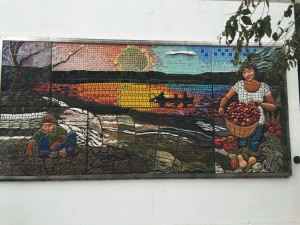
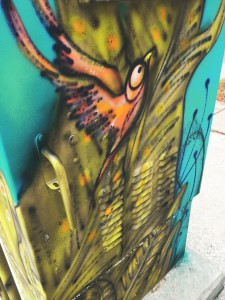
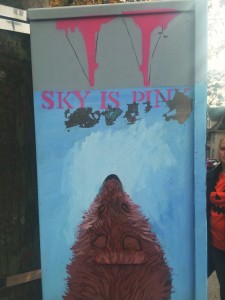
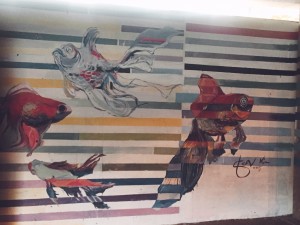
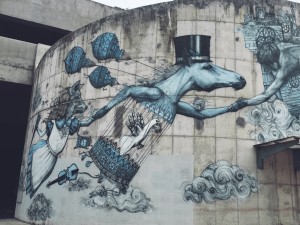
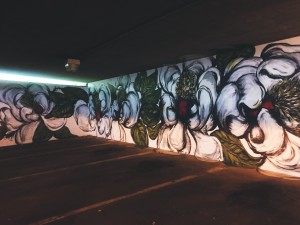
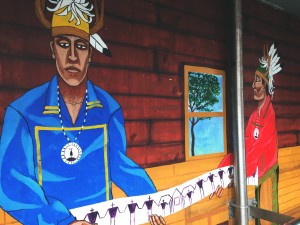
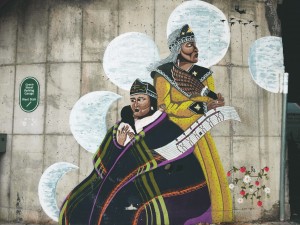
Thanks for posting pictures! I wasn’t able to attend the event, so I can’t wait to eventually explore Ithaca to see these murals in person.
Such beautiful pieces! Can’t wait to see some of these for myself soon. I especially love the one in the middle with the horse with the bird cage as a body flying.